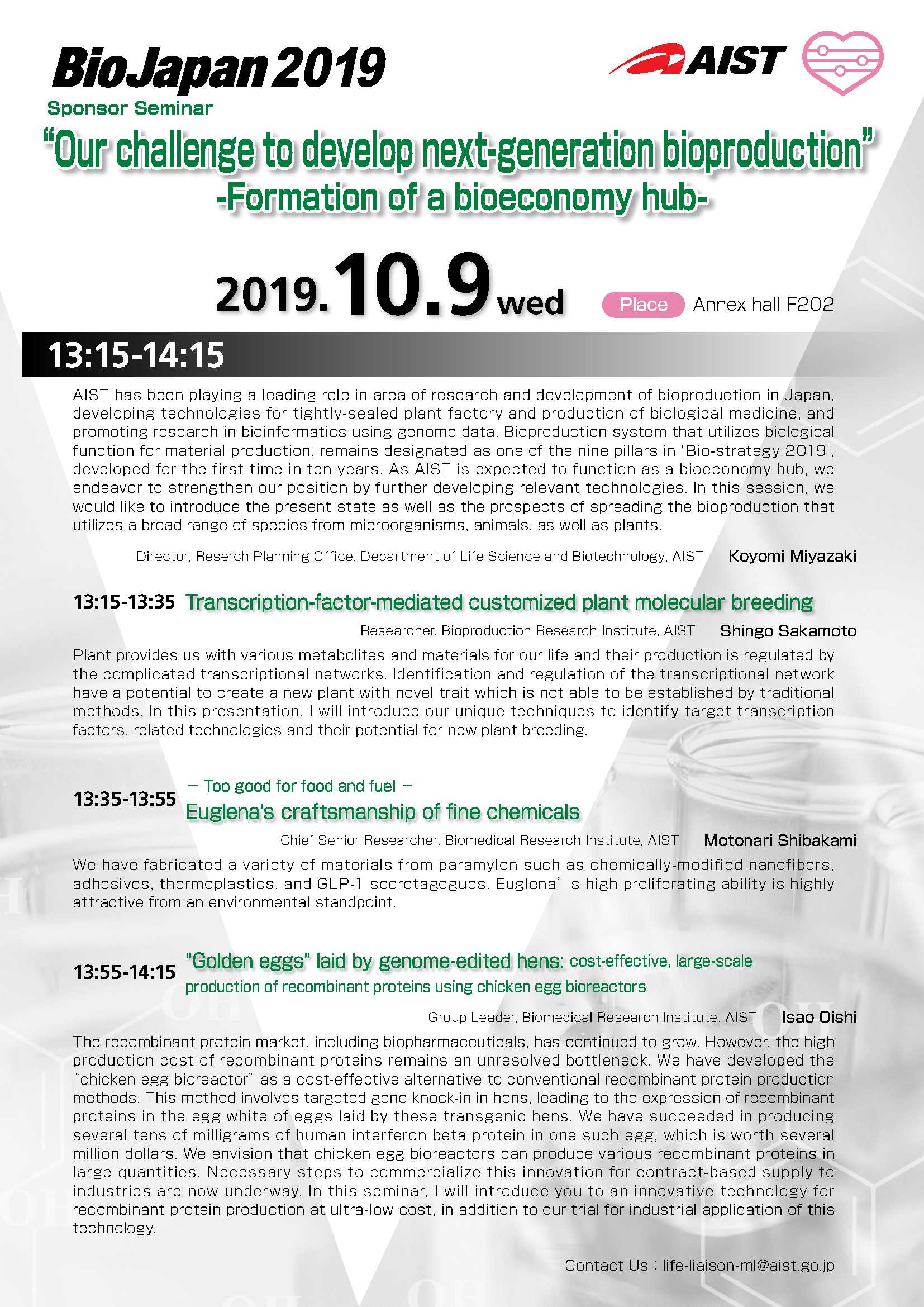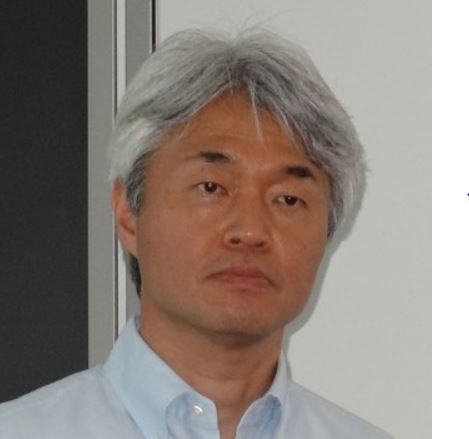“Our challenge to develop next-generation bioproduction”
: Formation of a bioeconomy hub
2019.10.09 Wed. 13:15~14:15
Annex Hall F202

Annex Hall F202
| Summary | AIST has been playing a leading role in area of research and development of bioproduction in Japan, developing technologies for tightly-sealed plant factory and production of biological medicine, and promoting research in bioinformatics using genome data.
Bioproduction system that utilizes biological function for material production, remains designated as one of the nine pillars in "Bio-strategy 2019", developed for the first time in ten years.
As AIST is expected to function as a bioeconomy hub, we endeavor to strengthen our position by further developing relevant technologies.
In this session, we would like to introduce the present state as well as the prospects of spreading the bioproduction that utilizes a broad range of species from microorganisms, animals, as well as plants.
Coordinator:Koyomi Miyazaki Director, Reserch Planning Office, Department of Life Science and Biotechnology, AIST |
|
| 【1】 | 13:15-13:35 Transcription-factor-mediated customized plant molecular breeding Shingo Sakamoto, Researcher, Bioproduction Research Institute, AIST |
|
| Plant provides us with various metabolites and materials for our life and their production is regulated by the complicated transcriptional networks. Identification and regulation of the transcriptional network have a potential to create a new plant with novel trait which is not able to be established by traditional methods. In this presentation, I will introduce our unique techniques to identify target transcription factors, related technologies and their potential for new plant breeding. | ||
| 【2】 | 13:35-13:55 -Too good for food and fuel- Euglena's craftsmanship of fine chemicals Motonari Shibakami, Chief Senior Researcher, Biomedical Research Institute, AIST
 | |
| We have fabricated a variety of materials from paramylon such as chemically-modified nanofibers, adhesives, thermoplastics, and GLP-1 secretagogues. Euglena’s high proliferating ability is highly attractive from an environmental standpoint. | ||
| 【3】 | 13:55-14:15 "Golden eggs" laid by genome-edited hens: cost-effective, large-scale production of recombinant proteins using chicken egg bioreactors Isao Oishi, Group Leader, Biomedical Research Institute, AIST
| |
| The recombinant protein market, including biopharmaceuticals, has continued to grow. However, the high production cost of recombinant proteins remains an unresolved bottleneck. We have developed the “chicken egg bioreactor” as a cost-effective alternative to conventional recombinant protein production methods. This method involves targeted gene knock-in in hens, leading to the expression of recombinant proteins in the egg white of eggs laid by these transgenic hens. We have succeeded in producing several tens of milligrams of human interferon beta protein in one such egg, which is worth several million dollars. We envision that chicken egg bioreactors can produce various recombinant proteins in large quantities. Necessary steps to commercialize this innovation for contract-based supply to industries are now underway. In this seminar, I will introduce you to an innovative technology for recombinant protein production at ultra-low cost, in addition to our trial for industrial application of this technology. |

